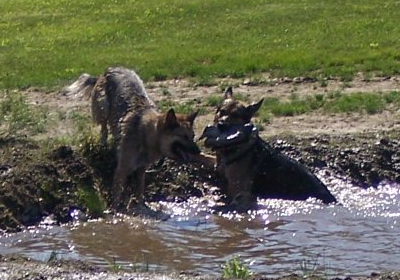Cerebellar Hypoplasia is a disorder occurring in cats and dogs in which the cerebellum is not completely mature at birth. Signs of the disorder are usually seen immediately at birth in cats but may become noticeable in dogs at about 2 months old.
There is a related condition called cerebellar abiotrophy in which symptoms are similar. It is caused by the loss of purkinje cells in the cerebellum that occurs after the animal is born. Cerebellar Abiotrophy is usually genetic in nature and can be seen in cats, dogs, horses, cattle, sheep and other animals.
Symptoms of Cerebellar Hypoplasia are uncoordinated and jerky movements, tremors.
Causes can be bacterial or viral infections that occur in utero, malnutrition, poisoning, injury or accidents during fetus development.
The condition doesn’t change with age either for better or worse. The animal is able to lead an almost normal life with precautions taken by the owner to prevent injuries that can affect its life. Cat and dog proofing areas for the pet, along with carpeted floors can help keep dangers at a minimum. Keeping a close watch on the pet is important.
However, in some cases where signs are so severe, euthanasia may be suggested.



